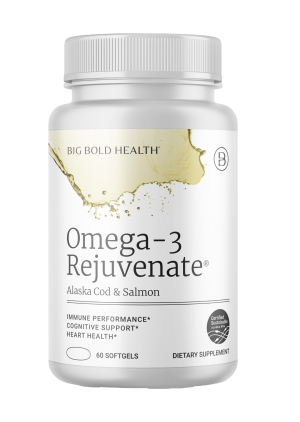February is upon us—which means, according to surveys, that 43% of you have forgotten your resolution to improve your fitness in ‘24. Here’s some ammo to fortify your intentions.
Regenerative effects of exercise: My last car was a 2012. I drove it 80,000+ miles, determined to suck the marrow out of its life expectancy. I suppose, in car-years, it was an octogenarian.
Then, just after it hit its 10-year mark, I noticed a little oil slick on the garage floor. I didn’t pay it much mind, until a young family member who’s a car guy said: “You better have that checked out.”
I dutifully took it to the dealer, and waited for the mechanic’s verdict. I was braced for a four-figure hit. Then I got a text: “Estimated repairs: $13,750”
Needless to say I took a trade-in and upgraded my ride. There’s only so much mechanical stress that a machine can take before things break down. But does that analogy hold for the human body? To some extent, yes. But a new study suggests that comparing us to steel/aluminum/rubber/glass vehicles is reductive.
In “Molecular mechanisms of exercise contributing to tissue regeneration”, researchers provide a comprehensive review of the benefits of exercise that is well-worth reading. They acknowledge that exercise has the potential to alleviate “a wide range of diseases, such as metabolic diseases, neurodegenerative disorders, tumors, and cardiovascular diseases.”
But there’s more. Imagine if, the more you drive your car, the more resilient it became to the ravages of wear and tear. That’s what happens when you take your body out of the garage and put the pedal down on the road—as if it were self-repairing with use.
“It has been uncovered that moderate exercise training enhances muscle regeneration after injury, as skeletal muscle mass recovery after extensive injury can be improved by contractile activity . . .” There’s evidence, too, that exercise helps to regenerate heart, lungs, brain and nervous system, bone, solid organs like the liver and kidneys, and even the skin.
The keys are “exerkines”—humoral substances that are up-regulated with exertion: “The organism will release various natural molecular mediators involved in signaling pathways that promote regeneration during exercise.”
I’ll take that. Since I can’t trade in my body, I’m stuck with my 1952 model, and I’m determined to preserve its performance. You can’t get exerkines at the drug store.
What’s YOUR excuse? A remarkable case study documents the potential of the human body to overcome age-related decline. Richard Morgan, four-time indoor senior rowing world champion, is 93. The son of a competitive rower, it was not until he retired at 73 that he began training in earnest. He has consistently notched age-group championships in his 80s and 90s.
In this study of one, researchers did a deep-dive on Morgan’s age-defying physiology. They found that, in many respects, his performance was equivalent to that of a moderately well-conditioned amateur athlete of 40 or 50.
For example, he achieved a maximal heart rate of 153 at peak exertion, defying the classic Fox Equation formula of taking 220 minus your age to calculate max HR.
His body fat percentage was 15%, placing him in the 95th percentile of nonagenarians; his lung capacity was 120% of predicted; his V02 max, a measurement of peak oxygen utilization was 21.3, akin to values for a sedentary young adult (Whew! Mine is still 37.3—but I have 22 years on him, and at my age, he hadn’t even begun serious training).
There was, however, some evidence that age is taking its inexorable toll: Richard’s stats at 92 showed a 18.2% decline in performance from age 79. Nevertheless, he’s a phenom, and the study authors rightly conclude:
“. . . the participant’s unique training history (i.e. commencing training at 73 yr of age) lends support to the premise that aerobic function remains malleable/plastic and may be robustly moderated with appropriate exercise stimuli, even without significant development in younger years.”
In other words, it’s never too late.
And by the way, a participation trophy goes to Richard for merely surviving; there’s only about a 1 in 5 chance that a man will attain or surpass his 95th birthday.
Is sitting the new smoking? As I write this I’m sitting, or rather slouching, with an iPad propped on my stomach. When I broadcast, I sit. When I see patients, same. Then I log more hours on the sofa watching sports, news, or streaming shows and movies.
Sitting is a proxy for sedentary lifestyle, and previous studies have suggested that it’s so inherently bad for us that no amount of physical activity can overcome its harms. That didn’t make sense. Was there something so pernicious about sitting that exercise couldn’t compensate for its deleterious effects?
To the rescue comes a definitive JAMA study of 481,688 individuals over a mean follow-up period of 12.85 years. Predictably, they found that cumulative sitting time was related to the risk of dying of coronary artery disease or dying in general in a dose-dependent fashion (the more the worse):
“ . . . individuals who predominantly engaged in sitting at work exhibited a higher risk of mortality from all causes (16%) and cardiovascular disease (34%) compared with those who predominantly did not sit, even after adjusting for sex, age, education, smoking, drinking, and body mass index.”
According to studies, smoking hikes the risk of dying by anywhere from as little as 6% (Japan) to as much as 30% (Serbia), so yeah, there’s some validity to the comparison.
But what exercise can’t do is antidote the harmful effects of smoking to any significant degree. Unlike sitting, for which exercise can, according to the JAMA study:
“For individuals mostly sitting at work and engaging in low (15-29 minutes per day) or no (<15 minutes per day) LTPA [leisure time physical activity], an increase in LTPA by 15 and 30 minutes per day, respectively, was associated with a reduction in mortality to a level similar to that of inactive individuals who mostly do not sit at work.”
Desk-bound workers of the world, rejoice, there’s a path to salvation for you!
When physical activity isn’t beneficial: As discussed above, more and more of us have sedentary jobs. We exercise recreationally, on tennis courts, golf courses, in pools, and gyms. If we go back a few generations, many of our grandfathers and great-grandfathers were stevedores, stonemasons, steelworkers, sanitation men, horse cart peddlers, miners, oil-riggers or agricultural fieldworkers, engaged in intense physical labor. They didn’t need to work out during off hours. Many didn’t fare so well and died young. Our family matriarchs, their widows, often eulogize them: “He ground himself down to the nubs!” So still do most people in non-industrialized countries.
A recent review examines what the authors term the “physical activity paradox”—the contrasting effects of physical activity in leisure time compared to that in the workplace. For example,
“ . . . a large meta-analysis of 193,696 participants showed that males involved in physically intense work have, compared to those less physically engaged, an 18% increase in the risk of mortality from all causes, even after adjustment for most important confounding factors, including physical activity in leisure time.” [my emphasis]
There may be several reasons for the divergent effects of compulsory work vs. leisure physical activity, say the review authors. They note that most voluntary workouts proceed at a controlled pace and with a limited duration; manual working conditions often dictate irregular bouts of intense activity with insufficient recovery time. Blue collar workers may be subject to extremes of heat and cold, environmental pollutants, and accident hazards. Or they may engage in shift work. They often complain of exhaustion and chronic pain. Nutrition in subsistence cultures may be inadequate to meet caloric and repair demands of strenuous labor. In general, non-leisure occupational physical activity is pro-inflammatory.
The authors venture “companies should ensure adequate recovery times at work and recreational forms in particular for workers who perform heavy manual work.”
Yes, dancing is good exercise: I can dance passably to my favorite rock ‘n roll at weddings and bar mitzvahs, but I’m no John Travolta. My fond wish is that, if reincarnation is real, I’d reprise as Gene Kelly, whose masculine grace is peerless.
A recent study poses the question, “Is dancing an effective intervention for fat loss?”
Indeed it is:
“The meta-analysis revealed that, compared to normal lifestyles, dance had meaningful improvements in body mass, BMI, waist circumference, Fat %, and fat mass.”
The study did not rate the relative effectiveness of say, folk vs. classic ballroom vs. Latin vs. the boogaloo vs. all-night raves.
They needed a study to justify the activity? Just dance!






